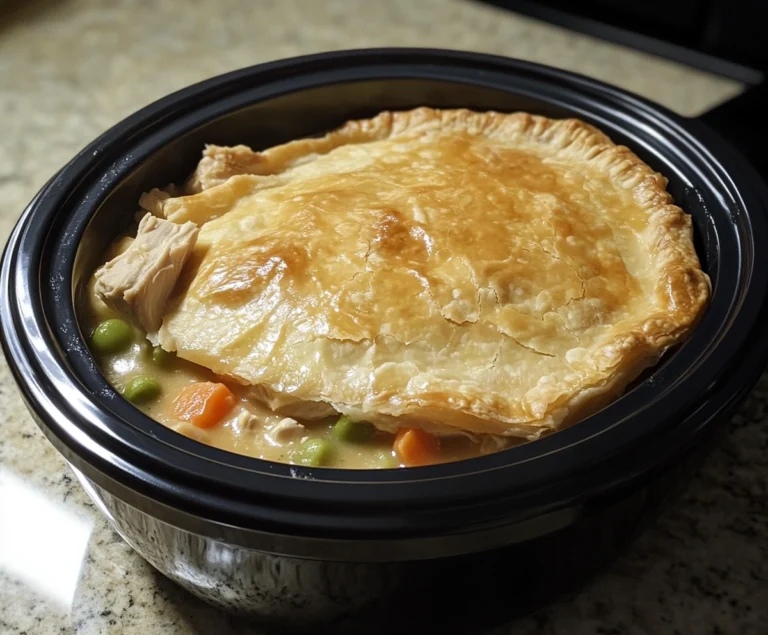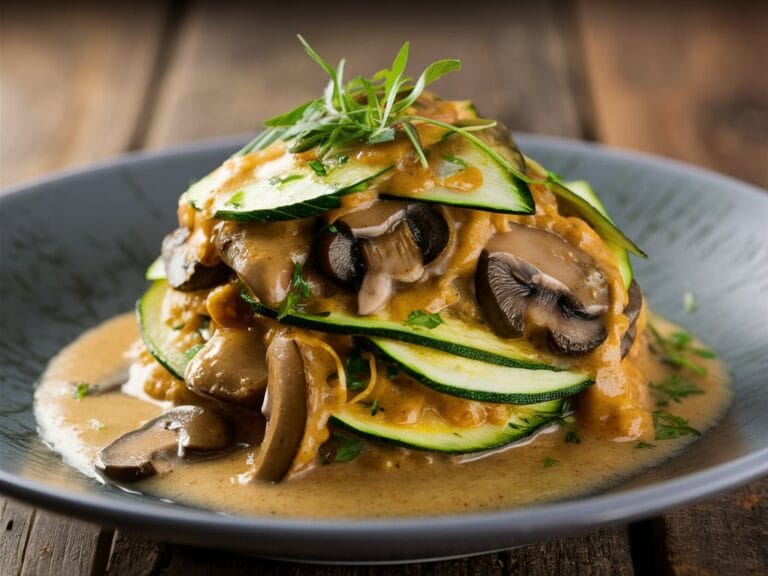How Long Is Grocery Store Pasta Salad Good For?
Pasta salad is a convenient and versatile dish often available in grocery store delis. However, understanding how long it stays fresh is crucial for maintaining food safety and avoiding waste. Different factors such as ingredients, storage conditions, and the type of dressing used can influence the longevity of your grocery store pasta salad. This article will explore all aspects related to the shelf life of pasta salad, offer useful tips on storage, discuss how to identify when it has gone bad, and answer frequently asked questions to help you enjoy your salad for as long as possible.
Why Pasta Salad is Popular and Convenient
Pasta salad is a staple at family gatherings, potlucks, picnics, and even a quick dinner solution for busy individuals. It is celebrated for its versatility, where a wide variety of ingredients can be combined—ranging from different pasta shapes, fresh vegetables, cheeses, meats, and various dressings. Grocery store pasta salad also offers the added convenience of being ready to serve, making it an easy and appealing meal or side dish.
One reason for its popularity is the balance between taste and texture, with ingredients like crunchy vegetables complementing the soft pasta. Many pasta salads also offer the opportunity to include nutrient-dense ingredients like lean proteins and fiber-rich veggies. These factors make pasta salad a favorite choice, but like all fresh foods, it has a limited shelf life.
Factors That Influence How Long Grocery Store Pasta Salad Stays Fresh
The shelf life of grocery store pasta salad can vary significantly depending on several important factors. Understanding these factors will allow you to store your pasta salad correctly and reduce the risk of spoilage.
1. Type of Dressing Used
The most important factor affecting the longevity of pasta salad is the type of dressing used. Store-bought pasta salads typically come with one of three types of dressings: mayonnaise-based, oil-based, or vinegar-based dressings.
- Mayo-Based Dressings: Pasta salads made with mayonnaise or creamy dressings are particularly susceptible to spoilage because mayonnaise contains eggs, which have a shorter shelf life. When stored properly in the refrigerator, a mayo-based pasta salad can last 7 to 10 days. The presence of mayonnaise makes the salad more prone to bacterial growth, especially if left out at room temperature for too long.
- Oil-Based Dressings: Pasta salads with oil-based dressings tend to last longer because oil is more stable at different temperatures. An oil-based pasta salad can last up to 12 days in the refrigerator. Oil acts as a natural preservative by providing a barrier to air, which helps slow down the spoiling process.
- Vinegar-Based or Light Dressings: Vinegar-based dressings, which are often lighter, can provide a moderate shelf life. These pasta salads typically last between 3 to 5 days. Vinegar’s acidity can help slow down spoilage, but they also tend to contain perishable ingredients like fresh vegetables that don’t last as long.
2. Ingredients in the Pasta Salad
The ingredients you use or that come pre-packaged with the grocery store pasta salad also significantly impact its shelf life:
- Meats (Chicken, Ham, or Seafood): Pasta salads that include proteins like cooked chicken, ham, shrimp, or other meats typically have a shorter shelf life. These items tend to spoil faster, especially in the presence of moisture, which can accelerate bacterial growth. Salads with these ingredients will generally only last 1 to 2 days in the fridge.
- Fresh Vegetables (Tomatoes, Cucumbers, Lettuce, etc.): Vegetables are another important consideration. If the salad contains moisture-rich vegetables like tomatoes or cucumbers, they may wilt or lose their texture more quickly. These vegetables can introduce moisture into the pasta, which can make it go soggy or spoil faster. Typically, salads with fresh vegetables last 3 to 5 days.
- Cheese and Dairy Products: If your pasta salad includes soft cheeses such as feta or mozzarella, these can spoil more quickly than hard cheeses like parmesan. The inclusion of dairy products, much like mayonnaise, limits the salad’s lifespan to around 3 to 7 days, depending on storage conditions.
- Herbs and Garnishes: Fresh herbs, like basil or parsley, can wilt and turn black after a few days in the fridge. It’s best to add these garnishes right before serving to preserve the salad’s freshness.
For more insight into maintaining freshness in dishes with perishable ingredients, read this helpful guide on airtight storage.
3. Storage Conditions
The way you store pasta salad is critical to extending its shelf life. Improper storage is a leading cause of foodborne illnesses and can lead to premature spoilage.
- Airtight Containers: Pasta salad should always be stored in airtight containers to prevent exposure to air, which can dry out the salad and promote bacterial growth. Containers with tight-fitting lids also prevent other odors from the fridge from being absorbed by the salad.
- Refrigeration: Always store pasta salad in the refrigerator at temperatures between 34°F and 40°F. The colder parts of your refrigerator, such as the back, are better for longer-lasting freshness. Leaving pasta salad out at room temperature for more than 2 hours can make it unsafe to eat.
- Portioning: If you’ve purchased a large container of pasta salad, consider dividing it into smaller portions before refrigerating. This minimizes the number of times you expose the entire salad to air each time you open the container to serve.
For more tips on storing salads with different ingredients, check out this storage guide for prolonging freshness.
Shelf Life of Different Types of Grocery Store Pasta Salad
The type of pasta salad plays a significant role in determining how long it will last. Here’s a breakdown of various types of pasta salads and their expected shelf lives under proper storage conditions:
1. Mayo-Based Pasta Salad
A creamy mayo-based pasta salad will generally last between 7 and 10 days in the refrigerator when stored in an airtight container. The mayonnaise makes the salad particularly prone to spoilage, especially if the salad contains other perishable ingredients like eggs or meat. For the freshest flavor and texture, try to consume a mayo-based salad within 5 days.
2. Oil-Based Pasta Salad
Pasta salads with oil-based dressings have a longer shelf life and can last up to 12 days in the fridge. Oil helps to seal out air, which helps preserve the salad longer. This type of salad often includes vegetables like peppers, cucumbers, or onions, which can still lose their texture over time, so it’s best to eat within 7 days for the best flavor and consistency.
3. Lightly Dressed Pasta Salad with Vinegar
Salads with vinegar-based dressings have a shorter shelf life of 3 to 5 days. The vinegar provides some preservation, but because these salads often include fresh vegetables and less fat content, they tend to spoil faster. Moisture-rich vegetables can cause the salad to become soggy or wilt quickly.
4. Pasta Salad with Meat or Seafood
Pasta salads that include cooked meats, such as chicken, ham, or shrimp, have a much shorter shelf life due to the perishable nature of these proteins. Even when stored properly, these salads generally last only 1 to 2 days. It’s essential to consume them as soon as possible and always ensure they are kept in the coldest part of the refrigerator.
Signs Your Pasta Salad Has Gone Bad
Eating spoiled pasta salad can lead to foodborne illness, so it’s important to know the signs of spoilage. Here are the most common indicators that your pasta salad is no longer safe to eat:
1. Visible Mold Growth
Mold growth is a definitive sign that your pasta salad has spoiled. Mold can appear as green, white, black, or grey patches on the surface of the pasta or on the vegetables. Once you notice mold, it’s time to discard the entire salad—even if the mold appears on just one part.
2. Changes in Texture
If the pasta becomes overly mushy, or the vegetables in the salad become slimy, it’s likely that the salad has started to spoil. A slimy texture is often a sign of bacterial growth, especially on vegetables like cucumbers or tomatoes.
3. Off Odors
A sour or foul smell is a clear sign of spoilage. If your pasta salad smells unpleasant, it’s best to err on the side of caution and discard it. Off odors can indicate bacterial growth, especially in salads that contain dairy-based ingredients like cheese or mayonnaise.
4. Taste Changes
If you notice that the pasta salad has a sour, bitter, or “off” taste, it’s an indication that the salad is no longer fresh. Taste changes are often the result of the breakdown of the dressing or other ingredients.
Proper Storage Tips for Extending Pasta Salad Freshness
Proper storage is essential to ensure that your pasta salad lasts as long as possible without spoiling. Follow these steps to maximize freshness:
1. Use Airtight Containers
The key to preserving the freshness of pasta salad is using airtight containers. Containers with tight-fitting lids prevent exposure to air, which can dry out the salad and promote bacterial growth. These containers also help keep unwanted odors from other foods in the fridge from seeping into the salad. For large batches, dividing the salad into smaller containers can also be beneficial, as you’ll reduce the amount of air exposure each time you open the container to serve.
2. Store in the Coldest Part of the Fridge
Place your pasta salad in the coldest part of the refrigerator, typically at the back, where the temperature is more stable. The fridge should be set to a temperature of 34°F to 40°F to keep the salad from spoiling. Avoid storing the salad in the refrigerator door, as this area tends to have more temperature fluctuations.
3. Use a Sealed Bag for Smaller Portions
If you’re storing small portions of pasta salad for individual servings, consider using a zip-lock bag or vacuum-sealed bag to keep it fresh. These bags can save space in the fridge and ensure airtight storage.
Is It Safe to Freeze Grocery Store Pasta Salad?
While freezing is an option for some foods, it isn’t always ideal for pasta salad. Freezing can significantly alter the texture and flavor of the salad, particularly for creamy or mayo-based versions.
1. Freezing Oil-Based Pasta Salad
Oil-based pasta salads tend to freeze better than mayo-based ones. The oil helps to preserve the ingredients, and the lack of dairy means fewer changes in texture. However, the pasta may still become softer after freezing and thawing.
- Best Practices for Freezing: When freezing oil-based pasta salad, use freezer-safe, airtight containers or bags. Be sure to remove as much air as possible to avoid freezer burn. Label the container with the date, as it’s best to consume frozen pasta salad within 1 month.
2. Freezing Mayo-Based Pasta Salad
Mayo-based salads don’t freeze well because the mayonnaise tends to separate and become watery once thawed. The pasta can also become mushy. For this reason, freezing mayo-based pasta salad is generally not recommended.
3. How to Thaw Frozen Pasta Salad
If you do decide to freeze pasta salad, it’s important to thaw it correctly. Thaw the salad in the refrigerator overnight rather than leaving it at room temperature. This method ensures that the salad remains at a safe temperature while it thaws. Once thawed, the salad may require some additional seasoning or fresh ingredients to restore its flavor and texture.
How to Revive Dry or Stale Pasta Salad
Sometimes, refrigerated pasta salad can become dry or lose its flavor after a few days. Luckily, there are simple ways to revive stale or dry pasta salad and restore its delicious taste.
1. Add Fresh Ingredients
One of the easiest ways to revive pasta salad is to add fresh ingredients like diced vegetables, herbs, or even a bit of freshly grated cheese. Adding fresh, crisp vegetables like bell peppers, cucumbers, or cherry tomatoes can restore both the texture and flavor of the salad.
2. Re-Season with Dressing
If the salad has become too dry, add a little more dressing to moisten it up. Drizzle in some olive oil, vinegar, or a bit of extra mayonnaise and toss the salad until evenly coated. This will help bring back the flavor and moisture.
3. Enhance the Flavor with Herbs
Herbs can go a long way in reviving the flavor of pasta salad. Adding fresh basil, parsley, dill, or cilantro can instantly enhance the taste and make the salad feel fresher. Squeeze in a bit of lemon juice or add a pinch of salt for an extra boost of flavor.
4. Serve at Room Temperature
Cold pasta salad may seem dry when first taken out of the fridge. Allow the salad to sit at room temperature for about 30 minutes before serving to let the flavors meld together again.
Frequently Asked Questions
How long does store-bought pasta salad last?
Store-bought pasta salad typically lasts between 7 to 12 days in the refrigerator, depending on the type of dressing and ingredients used. Always store the salad in an airtight container and refrigerate it as soon as possible after purchasing. Keep in mind that salads containing fresh vegetables, meats, or dairy products may spoil faster than oil-based salads.
Can you freeze pasta salad?
Yes, you can freeze pasta salad, but it’s not always recommended, especially for mayo-based salads. Oil-based pasta salads freeze better and retain more of their original texture and flavor after thawing. Always use airtight, freezer-safe containers and label the salad with the freezing date. Consume within 1 month for best results.
How long is mayo-based pasta salad good for?
Mayo-based pasta salad is typically good for 7 to 10 days when stored properly in the refrigerator. Be sure to keep it in an airtight container and watch for signs of spoilage, such as off smells or texture changes.
How long is pasta salad with seafood good for?
Pasta salad with seafood, such as shrimp or crab, has a much shorter shelf life—generally only 1 to 2 days. Because seafood spoils quickly, it’s important to consume seafood-based pasta salads as soon as possible and store them in the coldest part of the refrigerator.
Can you add fresh ingredients to revive old pasta salad?
Yes, adding fresh ingredients such as vegetables, herbs, or cheese can help revive stale or dry pasta salad. This not only improves the flavor but also enhances the texture. Additionally, adding a fresh drizzle of dressing or olive oil can moisten the salad and make it taste fresh again.
Conclusion: Maximize Freshness and Minimize Waste
Knowing how long grocery store pasta salad is good for, and following proper storage practices, can help you enjoy this convenient dish safely and deliciously over time. By understanding the factors that influence its shelf life—such as the type of dressing, ingredients, and storage methods—you can extend the freshness of your pasta salad and avoid food waste.
Be sure to keep an eye out for signs of spoilage and always follow food safety guidelines when storing and consuming pasta salad. Whether you’re enjoying a mayo-based pasta salad or one with an oil-based dressing, you can make the most out of this versatile dish by storing it properly and adding fresh ingredients when needed.
For more food safety tips and recipes, explore Aurelia Recipes.







